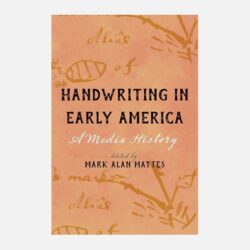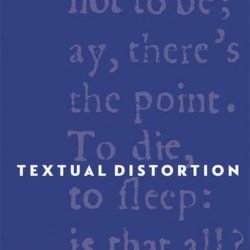In 2010, changes to American education standards eliminated the mandate to teach handwriting in public schools. As a result many states dropped the practice in classrooms. Yet in recent years trends have begun to reverse, and now more than 20 states once again include formal cursive instruction (Elizabeth Heubeck, “More States Require Schools to Teach Cursive Writing. Why?” EducationWeek, 16 November 2023). On the first day of 2024, California became one of the latest to do so, but newspapers reflect lingering skepticism. In one opinion piece entitled “Spare the state’s schoolchildren cruel and cursed cursive lessons,” a columnist for the Los Angeles Times concluded, “Cursive is for when you have nothing else to do, or want to live out some steampunk fantasy” (Gustavo Arellano, “Spare the state’s schoolchildren cruel and cursed cursive lessons,” Los Angeles Times, 15 January 2024). It was with this context in mind that I read Handwriting in Early America: A Media History, edited by Mark Alan Mattes. Why does handwriting matter, and how can scholars and educators better explain its significance?
Tag: manuscript culture
Pentiment: An Interview with Josh Sawyer
Pentiment (Obsidian 2022, $19.99, Xbox and Steam), the new narrative game from Obsidian, is a piece of media that gets…
Scrapbooks as Literary Documents
The scrapbook has a well-established place within the history of the book that spans from early modern commonplace books to…
Treharne, Elaine and Greg Walker, eds. Textual Distortion
In the introduction to Textual Distortion, a volume of essays published as part of the English Association’s “Essays and Studies” series, Elaine Treharne notes that the process of distortion “remains resolutely associated with the undesirable, the lost or the deceptive” (1). In response to this primarily negative view of distortion, the nine essays that Treharne and her co-editor, Greg Walker, have assembled in this collection document the “varied, dynamic and often positive role of distortion in the transmission and reception of texts” (5). Many of the essays approach distortion from a bibliographic or book-historical perspective, examining the distorting effects of various processes of textual transmission, such as scribal intervention, photo-facsimile reproduction, and digital manipulation. Other essays treat distortion as a mediating factor in the transmission of historical and literary discourse.
Meg Boulton, Jane Hawkes, and Melissa Herman, eds. The Art, Literature and Material Culture of the Medieval World: Transition, Transformation and Taxonomy
Meg Boulton, Jane Hawkes, and Melissa Herman, eds. The Art, Literature and Material Culture of the Medieval World: Transition, Transformation…


